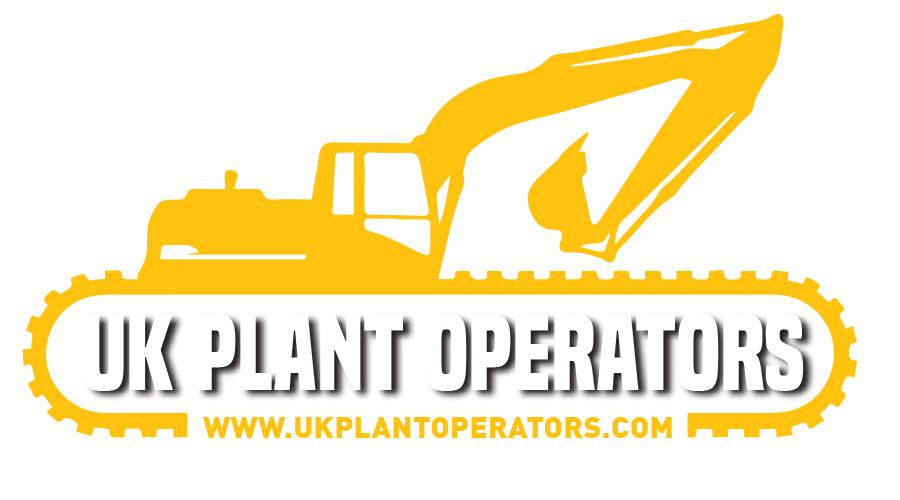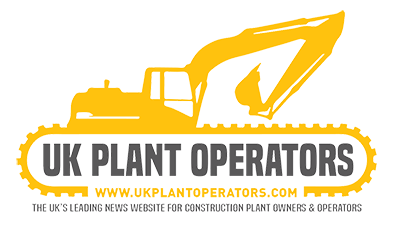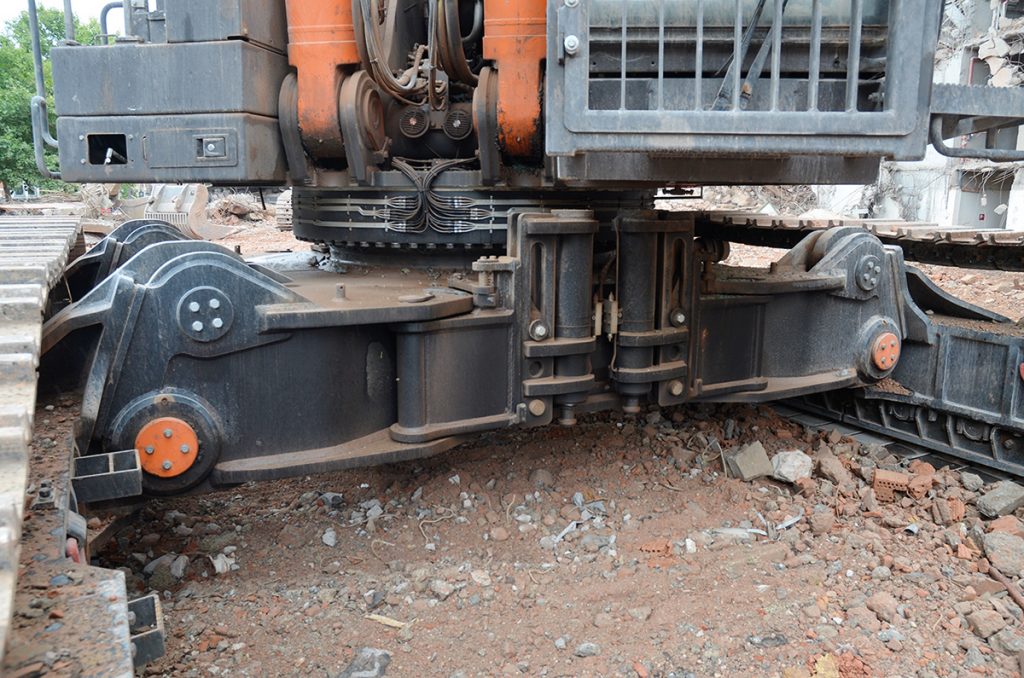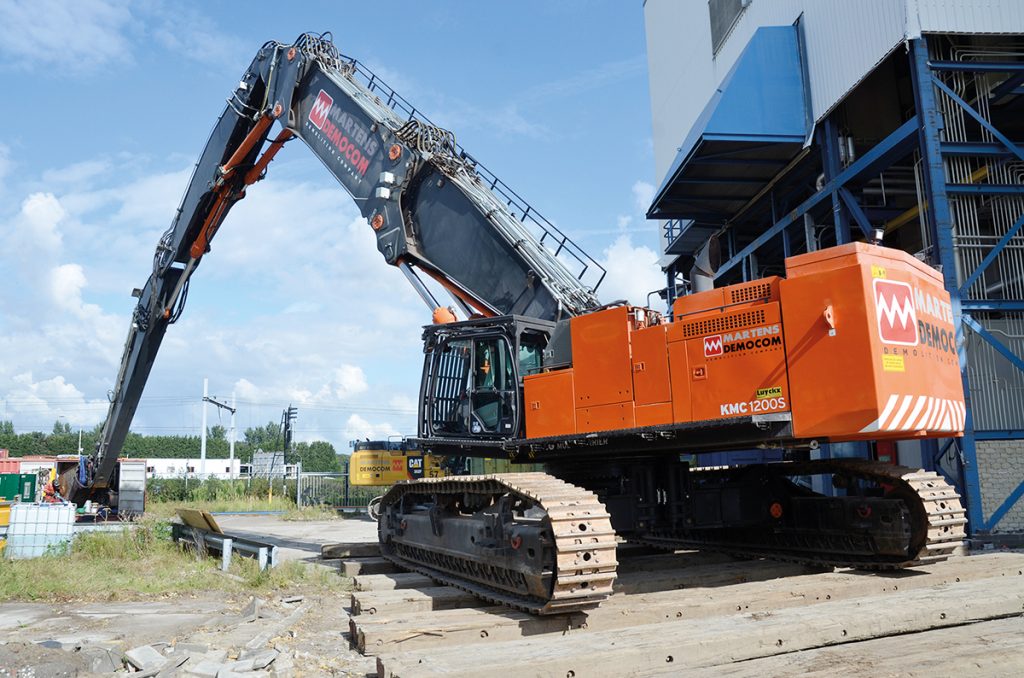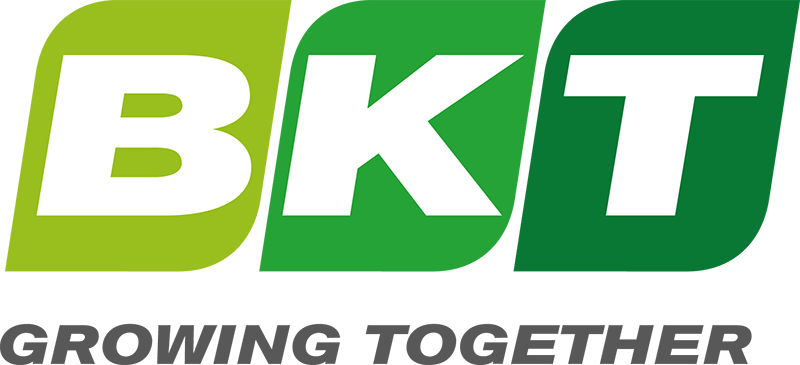![]()
Martens Democom has been looking for another big triple since selling this ‘beast’ to British demolition company Brown & Mason. With its three TAB configurations, the KMC 1200S is just the job.
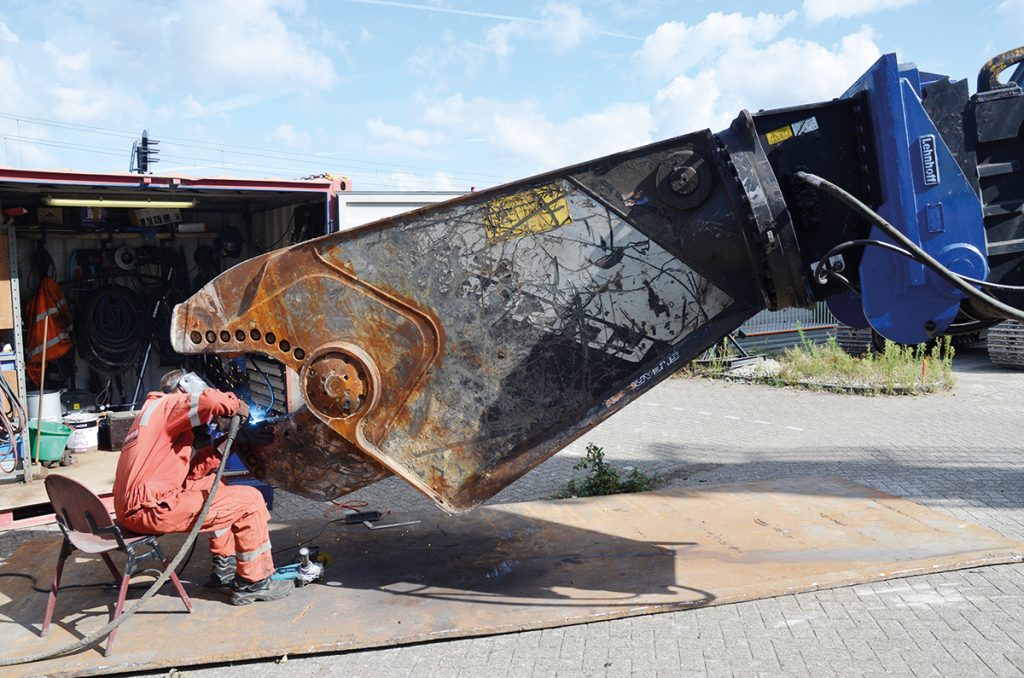
Reaching to a maximum pin height of 33.0m (maximum tool weight 7.5t), the longest one we saw marries the excavator’s main boom to an 8.0m mid arm and 9.0m stick.
It uses the same main lift rams, but the cylinder connecting the boom to the mid-arm is from a ZX890 and a stick cylinder from an EX1200. The bucket linkage is usually found on a ZX690.
With the second section of the main boom removed, the second TAB (8.0m boom, 8.0m mid arm and 9.0m stick) works to a maximum pin height of 27.0m and to a maximum depth of around 14.0m.
The third TAB sees the stick swapped for a shorter 3.4m version, which is capable of supporting a 12 to 15-tonne tool at a pin height of 22.0m and depth of 9.0m.
Heavy-duty attachments
The Belgian demolition company also has some of the world’s largest demolition attachments, including a Mantovanibenne-made CR100 concrete crusher, Hydraram HCC-140V, which even without its the top bracket weighs 14.5 tonnes, and a 15-tonne Genesis GXP 1500R scrap shear.
Even more impressive is the Mantovanibenne Eagle II SH2000R. Made sometime around 2012, the 6m-long and boom-mounted 25-tonne scrap shear boosts the weight of the PC1250 to around 130 tonnes.
The list of attachments currently at Peter’s disposal include a 6-tonne Mantovanibenne CR60R concrete crusher. On the scrap metal side, he is waiting for a Verachtert VT60. In the meantime, the 5.3t Fortress scrap shear (Lehnhoff connector), which is made in Wisconsin in the US, is normally carried by one of Marten Democom’s 50-tonners.
This job site is a tight one. Flanked on one side by a busy motorway and on the other by a main rail line, there is no space for the second workshop/spare parts container that normally accompanies the Hitachi excavator, so everything (AdBlue, cables, hoses, generator) is crammed into one storage unit.
Built in 1996, the gas-powered boilers within the power plant used to generate steam for a nearby cigarette manufacturing company. Redundant since 2012, Martens Democom won the contract to demolish the roughly 2,500-tonne steel structure, most of the weight of which is at the top of the structure.
I arrived to find Peter welding some extra steel to the jaws of the scrap shear, with the monster TAB stretched out at ground level. The sheer size of the three-piece design was really put into perspective when the company’s Cat 352F trundled below it. This thing is huge!
Big as it is, as I was to find out later that day, the flexibility of the three-piece design is equally at home chomping through steel at height as it is on the ground.
True, some of it was so thick that the most efficient way to reduce it to smaller chunks on the ground was manually with an oxyacetylene torch, but the big Hitachi had no trouble at all reducing the rest of the debris to smaller sizes for the Cat excavator to sort into different heaps and load into containers.
I asked the operator whether he prefers to work with the high-reach arm or three-piece boom? “Not really, but it makes a welcome change when switching between them,” he says. “The TAB is much easier to work with, but I also enjoy working with the 51.0m arm.”
Bringing this story to a close, Martens Democom is mainly active in the Benelux (Belgium, the Netherlands and Luxembourg), Denmark, Germany and northern France, so you could be forgiven for thinking that the KMC 1200S will remain in Europe.
Possibly, but the Belgian company is looking to cross more borders and recently established a UK subsidiary. Should they require the services of the 170-tonner, then it is possible the Demolition Dragon will cross the North Sea. Now wouldn’t that be fantastic.
